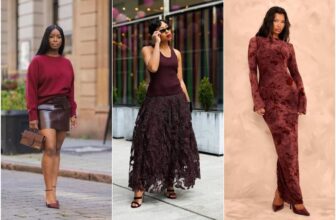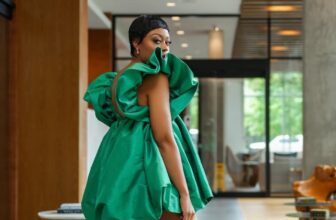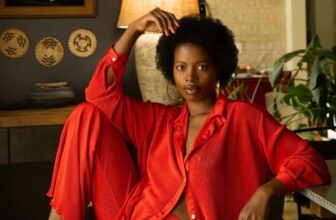Fashion is a huge industry with a lot of moving parts. It can be overwhelming to keep up with the latest trends, let alone figure out your own personal style.
Everyone wants to look their best and stand out at a gathering or event. Guess what, it’s not only on the plates of professional fashion stylists to help you stand out. The truth is that you may not even be able to afford it because you don’t enjoy the luxury of a famous person or a wealthy businessperson. But if you can follow a few basic fashion guidelines, you can learn to put your outfits together on your own and step out looking as appealing and fashionable as possible.
Being your own personal fashion stylist entails taking charge of your personal appearance and creating looks that make you feel trendy and confident. It allows you to express yourself and showcase your individuality, and can also save you time and money in the long run by helping you make smarter fashion choices. Additionally, taking the time to understand your own personal style and dressing to suit it can boost your self-esteem and overall sense of well-being. Keep reading to find some essential tips for becoming your own fashion stylist.
Who is a Fashion Stylist?
A fashion stylist is a creative professional who selects clothing and accessories for people to wear for various occasions, such as photo shoots, events, and everyday outfits. They often have a strong understanding of current fashion trends and use their knowledge to create unique and stylish looks for their clients.
Celebrity actors, models, influencers, musicians, politicians, and business leaders frequently make up the clientele that fashion stylists serve since they always arrive at work looking impeccable. Their simple secret is that a professional fashion stylist typically picks and compiles their whole wardrobe.
A career or hobby as a fashion stylist may be an alternative for you if you believe you possess the kind of flair that can enhance your own or other people’s appearances.

How to Become Your Own personal Fashion Stylist
Bravo! You’re this — close to becoming the envy of all with your styling techniques. Heeding the following rules might even launch you into a career in professional fashion styling.
1. Know Your Body Shape and Proportions
Determining your body shape and proportions can help you understand and make better decisions on which styles of clothing will flatter your figure and enhance your best features. Your body shape and proportions can change over time, so it’s important to regularly assess and update your understanding of your figure. Here are some steps to help you determine your body shape and proportions:
- Measurements: Take your bust, waist, and hip measurements to get a general idea of your proportions.
- Silhouette: Stand in front of a full-length mirror in form-fitting clothing, or wear something that outlines your natural shape, such as a swimsuit or leotard. Look at your silhouette and identify the shape of your waist, hips, and bust.
- Body Shape Types: There are several common body shape types, including apple, hourglass, pear, and rectangle. Research these body shape types and compare your measurements and silhouette to the descriptions and illustrations.
- Proportions: Pay attention to the relationships between your bust, waist, and hips, as well as your overall height and the length of your legs.

2. Create a Personal Style Statement
This is where you define your personal style by considering your favorite colors, patterns, and silhouettes that best suit your individuality. This defining moment also involves articulating your unique fashion sense and personality through your clothing choices. The idea here is to have fun, ignite your authenticity and wear confidence on your sleeves. To create your own personal style statement, you should do the following:
- Reflect: Think about your personal taste, lifestyle, and the messages you want to convey through your clothing choices. Consider what you’re drawn to when you shop for clothing and what you feel confident and comfortable wearing.
- Experiment: Try out different styles and see what feels authentic to you. Don’t be afraid to step out of your comfort zone and try new things.
- Define your values: Consider what values are important to you and how you can express them through your clothing choices. For example, if sustainability is important to you, you may want to focus on purchasing clothing made from sustainable materials.
- Identify your signature pieces: Think about the items in your wardrobe that you love and feel confident in, and make a note of the common elements or themes among them.
- Write your statement: Use the information you’ve gathered to write a few sentences that articulate your personal style. This statement can serve as a guide for your future fashion choices and help you stay true to your personal style.
3. Stay Up-to-Date with Trends
A fun approach to expressing yourself and dressing fashionably is to keep up with the latest trends. However, because fashion trends shift so often, it can be challenging to keep up with the fast-paced world. Becoming up to date on the newest trends is essential for being a good fashion stylist, but you need also to be aware of what flatters your body type and personal style. Paying attention to new collections and fashion shows, reading fashion magazines and blogs, and following fashion influencers are all ways to stay current with the latest fashion trends while maintaining your own personal style.
4. Build a Wardrobe that is Versatile
This requires investing in a few key pieces that can be worn in different ways and combined with other items to create different looks. In simple terms, invest in versatile pieces that can be dressed up or down and mixed and matched with other items. Here are some tips to help you build a versatile wardrobe:
- Start with neutral colors: Choose black, white, navy, grey, beige and brown as your base colors as they are easy to mix and match.
- Invest in quality essentials: Buy high-quality essentials such as t-shirts, jeans, blazers, and trousers in neutral colors. These will form the foundation of your wardrobe and can be dressed up or down depending on the occasion.
- Add statement pieces: Incorporate statement pieces such as bold-colored coats, printed dresses, and statement jewelry to add personality to your outfits.
- Choose versatile accessories: Invest in versatile accessories such as scarves, belts, and bags that can be used to change up the look of an outfit.
- Consider your lifestyle: Think about your daily activities, work environment, and events you attend when choosing items for your wardrobe.
- Shop for multi-functional pieces: Look for pieces that can be dressed up or down, such as a midi skirt that can be paired with a blouse for work or a t-shirt for casual events.

5. Accessorize
Understanding and appreciating the power of accessorizing is very crucial in your journey to becoming your personal stylist. Well-selected accessories may completely change the look of an ensemble while poorly-picked accessories can completely ruin one. Accessorizing is as important as it gets and can help elevate your outfits and give them a unique touch. Accessories have the power to modify the vibe or tone of a look as well as add intrigue, texture, and complexity to an ensemble.
A talented fashion stylist should be knowledgeable about how to use accessories to enhance an ensemble and showcase the wearer’s individual style. Accessories are an effective tool for designing visually appealing and harmonious outfits since they may also help to balance proportions and draw attention to particular body parts.
6. Experiment and Have Fun
Don’t be afraid to try new styles and step outside of your comfort zone. Fashion is all about self-expression and having fun with it. As a fashion stylist, you can experiment and have fun in many ways:
- Play with different styles and themes and experiment with different textures and materials to add depth to your outfits.
- Try out different types of jewelry, hats, scarves, and other accessories to complement your outfits and add personality.
- Get creative with layering clothing pieces to create depth and interest, and also to adapt to changing weather conditions.
- Use color to your advantage by trying out different color combinations and experimenting with different color palettes to see what works best for you.
- Collaborate with photographers, makeup artists, and other fashion professionals to bring your ideas to life.
7. Get Some Feedback
To receive a new perspective on your wardrobe choices, ask trustworthy friends or other stylists for their advice. As a fashion stylist, getting feedback is essential since it may help you develop your abilities, spot areas for improvement, and keep up with trends and demands in the industry. Feedback is a crucial component of learning and development, and it can improve your fashion styling skills over time. Here are a few practical strategies for getting feedback:
- After dressing up or after an event, ask your friends or family, or even strangers for their thoughts on your styling work. This can help you to identify what you did well and what can be improved for future projects.
- Connect with professional fashion stylists and ask for their feedback on your work. This can provide valuable insights and perspectives that you might not have considered otherwise.
- Post your outfits on social media and ask for ratings from your followers. This can help you to reach a wider audience and get a more diverse range of opinions.
- Be open to receiving constructive criticism and use it as an opportunity to grow and improve your skills. Be gracious and appreciative of the feedback, and consider it carefully to see how you can apply it to your future styles.






